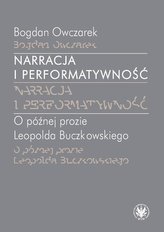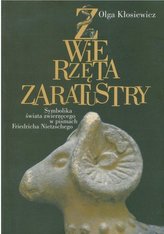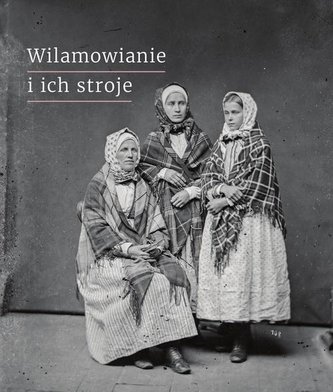Wilamowianie i ich stroje Dokumentacja językowego i kulturowego dziedzictwa Wilamowic
527 Kč 580 Kč
Strój, obok języka wymysiöeryś, jest najważniejszym wyróżnikiem kulturowej odrębności Wilamowian. Wilamowice – położone na południu Polski miasteczko, zostało założone jeszcze w średniowieczu przez germańskich osadników. Ich potomkowie zajmowali się tkactwem, a także odbywali podróże kupieckie do odległych zakątków Europy. Przywozili z nich m.in. materiały, wzory i krawieckie pomysły, które wzbogacały lokalne stroje, czyniąc z nich nie tylko ważny element budujący wilamowską tożsamość, ale i przedmiot zainteresowania polskich oraz niemieckich badaczy i propagandzistów. W pierwszych latach po II wojnie światowej strój wilamowski był tępiony, a noszące go osoby poddawane represjom. W PRL-u starano się go sprowadzić do roli kostiumu scenicznego, co po części się udało. Dziś lokalni aktywiści i badacze podejmują starania, by przywrócić wiedzę o wilamowskich strojach, uchronić przed zniszczeniem ich stare elementy, ale tworzyć też nowe z dostępnych współcześnie materiałów.
\nW niniejszej książce autorzy starają się opisywać te różne procesy, przedstawić ich najważniejszych aktorów oraz społeczną recepcję ich działań. Zgodnie z tytułem „Wilamowianie i ich stroje” jest publikacją o relacji człowieka ze strojem, człowieka z rzeczą. Zarówno materialna, jak i antropologiczna sfera tej relacji, znalazły miejsce w analizach okraszonych bogatym materiałem ilustracyjnym. Autorzy tomu to badacze reprezentujący różne podejścia metodologiczne. Wśród nich szczególne miejsce zajęli naukowcy z Wilamowic będący jednocześnie użytkownikami stroju. Stworzyli oni nowy sposób opisu tego elementu kultury.
\n\n
Vilamovians and their clothing
\nAside from their language, Wymysiöeryś, clothing is the main feature of cultural distinctiveness for the inhabitants of Wilamowice, a small town in southern Poland. It was founded in the Middle Ages by Germanic settlers, whose descendants practiced weaving but also traveled as merchants to remote parts of Europe. From their journeys were brought fabrics, patterns and sartorial ideas that enriched local attire, which in consequence became not only an important element constituting Vilamovian identity, but also a subject of interest for Polish and German researchers and political activists. In the years following the World War 2 Vilamovian clothing was eradicated and its users were repressed. During communist rule in Poland there was an attempt to reduce it to a stage costume, and these efforts were partially successful. Today, local activists and researchers endeavor to restore knowledge of Vilamovian apparel, protect their old garments from destruction, but also to create the new ones from contemporary accessible materials.
\nThe authors describe these processes and present the crucial actors involved as well as the social responses to their actions. As the title suggests, “Vilamovians and their clothing” is a book about the relation between people and clothing, between human beings and things. The analysis of this relation, encompassing both the material and the anthropological sphere, is accompanied by a wealth of illustrations. Among the authors of the publication, researchers representing different methodological perspectives, a special place is held by researchers from Wilamowice. As users themselves of the traditional clothing, they have created a new way of describing this element of culture.
\n| Autor: | Chromik Bartłomiej, Filip Elżbieta Teresa, Kordyzon Wojciech, Król Tymoteusz |
| Nakladatel: | Wydawnictwa Uniwersytetu Warszawskiego |
| ISBN: | 9788395731808 |
| Rok vydání: | 2021 |
| Jazyk : | Polština |
| Vazba: | měkká |
| Počet stran: | 580 |
-

Aktualne wyzwania prawa wyborczego
-

Skuteczność zapobiegania zaburzeniom ...
Rakowska Małgorzata Jadwiga
-

Narracja i performatywność
Owczarek Bogdan
-

Kupiec wenecki
Shakespeare, William
-

Rozmowy o glottodydaktyce
-

Dziennik 1915-1917
Wielhorski Władysław
-

Język polski w Chinach Z doświadczeń ...
-

Gramatyka języka koreańskiego z ćwicz...
Paradowska Anna
-

Modernizm między budynkami
Agnieszka Kępkowicz
-

Zdrowie i życie seksualne Polek i Pol...
Izdebski Zbigniew
-

Rewolucja plenerowa XVIII wieku?
Pienkos, Andrzej
-

Obsesja porządku.
Gutschow, Niels
-

Stosunki międzynarodowe Antologia tek...
-

Przekład jako aneksja kulturowa dzieła
-

Topografia wyobraźni anhellicznej Mod...
Chilińska Milena
-

Zwierzęta Zaratustry Symbolika świata...
Kłosiewicz Olga





